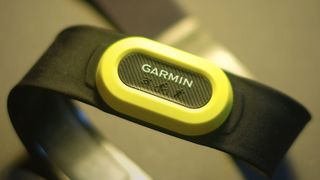Why you should use a heart rate monitor instead of a fitness watch
In some cases, a heart rate monitor is your best option to track workouts accurately

Smartwatches, especially running watches and fitness trackers, are amazing pieces of technology that can help you train harder, recover faster and improve the quality of your sleep. That said, using the best heart rate monitors is an even better option sometimes, especially if you need accurate data for your training.
First, let’s clarify that we aren’t trying to convince anybody to switch their smartwatches to heart rate monitors. The best smartwatches are convenient to use, and considering the variety of options available to buy, everyone can pick a performance wearable that matches their needs perfectly, whether it’s the Fitbit Sense or the Garmin Forerunner 955.

No, everyone should keep their smartwatches and make the most of them by wearing them as much as possible; the best running watches can provide the most accurate suggestions when worn not just for runs but also for sleeping and recovery. Most wearables use proprietary algorithms to calculate strain on the body and the nervous system and suggest workouts (or rest) accordingly.
If smartwatches are so great, why should anyone use a heart rate monitor? There are a number of reasons why adding one to your workout tracking setup is a good idea, the first of which is that heart rate monitors tend to track heart rate more accurately than smartwatches. The optical heart rate sensors found on smartwatches will always have limitations: the wrist moves a lot, gets sweaty, and has hair on it, not to mention the skin colour also has an impact on readings.

On the other hand, heart rate monitor units don't have to 'see' the skin to measure heart rate; instead of looking, they use electrodes to detect electrical signals from your heart. Not to mention, chest strap-style heart rate monitors sit as close to the heart as possible, ensuring the signal from the heart to the sensor unit is less distorted.
Swimmers and triathletes also tend to use heart rate monitor straps to track heart rate underwater. Water refracts the LED light emitted from optical heart rate sensors found on the back of smartwatches, compromising readings. Heart rate monitors don't have this issue, and many can be used in pools, too, as long as they are rinsed after use (to wash off the chlorine).
Another benefit of heart rate monitors also stems from the fact they aren't positioned on the wrist. Some types of workouts, such as kettlebell training, will require the wrists to be clear of obstructions so they won't get bruised. The author of this article learned this lesson the hard way; his wrist got bruised after a kettlebell clean set wearing a Garmin watch. Surprisingly, the watch was completely unscathed, even after multiple reps of cleans, banging against the watch's body.

Should you use heart rate monitors instead of smartwatches, then? We’d recommend using them simultaneously. Most heart rate monitors connect to smartwatches via ANT+ connection, adding accurate heart rate data to the many other metrics the watches track, so you get the best of both worlds.
Better still, combining a heart rate monitor with a cheap running watch is the budget-savvy athlete’s best option: older multisport watches are more affordable, and even a cheap heart rate strap is more accurate than most smartwatches, so for little money, you can assemble a decent setup.
Is there a point in using a heart rate monitor on its own for tracking workouts? Some premium models, such as the Garmin HRM-Pro, can track your stats all day without a watch, so it’s not out of the realm of possibilities to use as your main and only tracker. However, it’s worth noting that wearing a heart rate strap all day is not convenient as wearing a watch. Plus, by only using a heart rate monitor, you miss out on some of the cool smart features smartwatches provide.
Get daily insight, inspiration and deals in your inbox
Get the hottest deals available in your inbox plus news, reviews, opinion, analysis and more from the TechRadar team.
Matt is a prolific fitness writer who covers everything from running shoes and watches to home weights and multi-gyms, You can often find him eating some sort of rice dish straight out of a plastic container, staring at an empty word document. When he isn’t writing fitness news, reviews and features for T3, TechRadar or Fit&Well, he’s probably out testing running shoes (wearing four fitness trackers simultaneously) or doing home workouts in his tiny flat.
Most Popular




